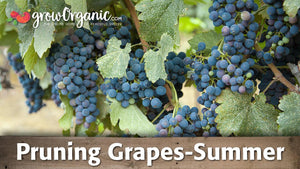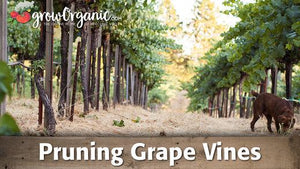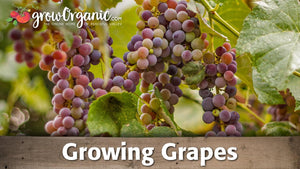Item Number: FV025
Cabernet Sauvignon Wine Grape Vine
Bold red grapes for exceptional wine.
Mix-and-match for free shipping when purchasing 6 or more perennial berries, vines, or crowns!
Cabernet Sauvignon grapes are a premium wine variety, producing small, dark purple fruit with rich flavor and balanced acidity. These grapes are ideal for crafting full-bodied red wines with notes of blackcurrant, cherry, and oak. The vines thrive in full sun and well-draining soil, performing best in warm, dry climates. Known for their vigorous growth and reliable yields, Cabernet Sauvignon grapes are a top choice for home winemakers and professional vineyards.
- Bare Root Vine
- Variety: European
- Zones: 6-10
- Pruning: Spur Prune
- Harvest: August - September
- Fruit: Dark red wine grape, small and spherical with thick skin.
Facts of note: one of the world’s most widely recognized red wine grape varieties that can be grown in a diverse spectrum of climates. They usually make strong, dark wines with flavors like black cherry, currant, mint, eucalyptus, and green bell pepper. The grapes have thick skins and the vines are hardy and resistant to rot and frost. This new type of grape came about by accident in the 1600’s when Cabernet franc and Sauvignon blanc crossed paths.
The Cabernet Sauvignon grape, one of the world's most renowned wine varieties, is celebrated for its rich flavors and complex characteristics. Cultivated by wine enthusiasts and winemakers alike, the Cabernet Sauvignon grape vine offers a unique and rewarding experience in the world of viticulture.
Cabernet Sauvignon plants thrive in a variety of growing regions, including warmer climates such as Washington State in the United States. Known for producing bold and complex wines, Cabernet Sauvignon shares the spotlight with Pinot Noir as one of the most popular grape varieties worldwide.
In Washington State, where the climate is conducive to grape cultivation, Cabernet Sauvignon vines flourish, yielding wines with rich flavors and structured tannins. Tasting notes often include aromas of black currant, plum, and subtle hints of cedar and vanilla. These wines pair exceptionally well with hearty dishes like steak and lamb, as well as with aged cheeses. While Cabernet Sauvignon is primarily associated with red grapes, it's worth noting that some winemakers also produce white Cabernet Sauvignon wines, offering a unique twist on this classic varietal.
In other parts of the world including South Africa Cabernet Sauvignon wines are celebrated for their rich aromas and flavors of blackcurrant, tobacco, and dark chocolate. These bold reds pair excellently with grilled meats and hearty dishes, showcasing their versatility as a food-friendly wine. Additionally, some winemakers in South Africa experiment with white Cabernet Sauvignon, offering a refreshing and unexpected twist on this renowned varietal.
Characteristics
Cabernet Sauvignon grapes (Vitis vinifera) are renowned for their exceptional qualities that contribute to the production of some of the world's finest red wines. These grapes possess several distinctive characteristics:
Berry Size and Shape: Cabernet Sauvignon grapes are small and spherical with thick skin, making them ideal for winemaking. The skin's thickness contributes to the grapes' deep color and tannins, which are crucial for the wine's structure and aging potential.
Flavor Profile: The grapes yield wines with complex flavors, including blackcurrant, plum, cherry, and hints of cedar, tobacco, and green bell pepper. This intricate flavor profile is why Cabernet Sauvignon is often referred to as having a "cabernet character."
Aging Potential: Cabernet Sauvignon wines have excellent aging potential. Properly stored and aged, they develop added depth and complexity, making them highly sought-after by wine connoisseurs.
Cultivation Techniques
Cultivating Cabernet Sauvignon grapes requires careful attention to detail and a favorable climate. Here are some key considerations for successful cultivation:
Climate: Cabernet Sauvignon grapes thrive in warm, temperate climates with long growing seasons. They require ample sunlight and a significant temperature difference between day and night for optimal flavor development.
Soil: Well-drained, gravelly or sandy soils are preferred for Cabernet Sauvignon vineyards. The grapevines do well in soil with good drainage to prevent waterlogged roots.
Pruning: Pruning plays a vital role in managing the growth and quality of Cabernet Sauvignon vines. Proper pruning helps control yields and encourages the development of concentrated flavors in the grapes.
Training: The grapevines can be trained using various methods, including the traditional vertical shoot positioning (VSP) or the more modern Smart-Dyson trellis system. Training and canopy management are essential for maximizing sunlight exposure and airflow.
Disease Control: Cabernet Sauvignon grapevines are susceptible to certain diseases and pests, including powdery mildew and grapevine leafhoppers. Implementing appropriate disease control measures is crucial for a successful harvest.
Exceptional Wines
Cabernet Sauvignon is known for producing wines that are not only complex but also age-worthy. These wines are often used in Bordeaux blends or crafted as single varietal wines. Here are some notable aspects of Cabernet Sauvignon wines:
Bordeaux Blends: Cabernet Sauvignon is a key component in Bordeaux blends, alongside Merlot, Cabernet Franc, Petit Verdot, and Malbec. These blends create harmonious wines with a balance of structure, fruitiness, and elegance.
Single Varietal Wines: Many renowned wineries produce exceptional single varietal Cabernet Sauvignon wines that showcase the grape's full potential. These wines are known for their deep color, rich flavors, and aging ability.
Aging Potential: Cabernet Sauvignon wines can age gracefully for decades. With proper storage conditions, they develop greater complexity, softer tannins, and tertiary flavors like leather, tobacco, and earthy notes.
Cabernet Sauvignon grapes are a prized variety among winemakers worldwide, known for their distinct characteristics and the exceptional wines they produce. Peaceful Valley Farm & Garden Supply offers the opportunity for wine enthusiasts and vintners to cultivate these grapes, enabling them to craft wines with depth, complexity, and aging potential. Whether you are a beginner or an experienced viticulturist, Cabernet Sauvignon grapes provide a rewarding journey in the art of winemaking.
Check out our grape vine collection here.
Visit our Berry, Vine & Crowns Characteristics Chart to compare growing characteristics for all our berries, vines, and crowns.
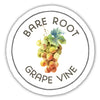


Check Your Zone Compatibility:
Compatible with your zone.
Growing Zone for

Our Guarantee To You
Since 1976, we've served our customers at every stage of growing. Please contact us at any time. We are happy to support and assist you.
Shipping Information
Shipping Information
Cannot ship to the following states: HI , AK , PR , GU , VI , OR , WA , ID
Cannot ship via USPS.
Cannot ship via SmartPost.
Shipping Weight: 3.3 lb
Dimensions: 18.0"L x 3.0"W x 3.0"H
Features
Features
- Open-Pollinated
- Thornless
Characteristics
Characteristics
Planting & Care
Planting & Care
Useful Information
Useful Information
Guarantee
Guarantee
Limited Dormant Tree & Plant Guarantee
* Claim deadline is June 15th
We guarantee that your dormant tree or plant will arrive in good, viable condition. If your tree arrives in substandard condition, notify us within 3 days of delivery. Please email pictures of the box, inside packaging, the tree and its roots to helpdesk@groworganic.com. We will investigate your claim and process a request to exchange or refund the damaged product.
If your dormant tree or plant has not grown new leaves by June 15th, you may be eligible for our Limited Dormant Tree & Plant Guarantee. This guarantee provides for a store credit for the purchase price of the tree, excluding shipping. Please see the Instructions below.
Important Dates:
- April 1st Dormant trees/plants must be planted in the ground
- May 15th Perform scratch test, if no new leaves have grown
- June 15th Deadline to apply for a dormant tree/plant credit
All required documentation must be received by June 15th for your claim to be considered. Claims or documentation received after June 15th will be denied, without exception. Instructions listed below
Terms and Conditions
We cannot guarantee that your tree or plant will remain alive and healthy after it is received, or bear fruit as there are too many variables in your environment that are beyond our control (i.e. soil preparation, weed and pest control, proper irrigation, chill hours, compatible hardiness for your growing zone, proper choice of pollinator, extreme weather, rodent damage, disease, etc.).
We cannot guarantee that we will be able to provide a replacement tree/plant of the same species either that same growing season or in future years. Customers are responsible for all shipping fees associated with replacement trees and plants.
If we determine that the tree you purchased directly from us is not viable, we will issue you a store credit (not a refund) for the purchase price of the affected dormant tree or plant. Shipping is not included in the dormant tree/plant guarantee. Store credits can be used to purchase any product we sell and are valid for use only until July 1st of the following year.
Historically, 98% of our dormant trees and plants grow and thrive when they have been cared for and planted using our growing guides. Dormant trees and plants must be planted in the ground by April 1st in order to be eligible for credit. If the ground in your area is still frozen solid, you may temporarily plant your tree or plant in a pot.
Potted, non-dormant trees or plants are excluded from this guarantee as they are not dormant at the time of shipment. Evergreen trees such as citrus, avocado and olive trees are not available for credit under the Dormant Tree and Plant Guarantee.
Instructions
We guarantee that your dormant fruit tree or plant will leaf out, if you care for it according to our growing guides. In the unlikely event that your dormant tree or plant does not have leaves by May 15th, follow these simple steps to apply for a store credit:
Before you call or email, please perform a “scratch test” to determine if the tree or plant is still alive. This video shows how to check for live tissue under the bark. Scratch tests need to be done a few inches above and below the graft.
Green Cambium Layer / Living Trees
If the cambium layer under the bark is green, give your tree a little more time. It is still alive, but hasn’t come out of dormancy yet. Check to make sure that it is getting the right amount of deep root water, enough sunlight and that the weather is warm enough for that type of tree/plant to come out of dormancy. Every tree has its own personality and will come out of dormancy at different times. Be sure to submit the required documentation listed below by June 15th, if it doesn’t grow leaves.
Brown Cambium Layer / Dead Trees
If the scratch test shows a brown cambium layer or if your dormant tree/plant doesn’t have leaves by June 1st, please email us at helpdesk@groworganic.com. All required documentation listed below must be received by June 15th for your claim to be considered. To be considered for the guarantee claim, all required documentation must be received by June 15th. Incomplete submissions will be denied.
Required Documentation
- Order number
- Name of dormant tree/plant and the quantity affected
- Photos of each tree or plant showing:
- The roots (tree or plant must be pulled out of the ground)
- The scratch test areas
- The entire tree/plant
We reserve the right to not issue credit for items that have already been replaced. We also reserve the right to require photographic evidence that the tree/plant was not killed by root rot, rodent or mechanical damage.
Share
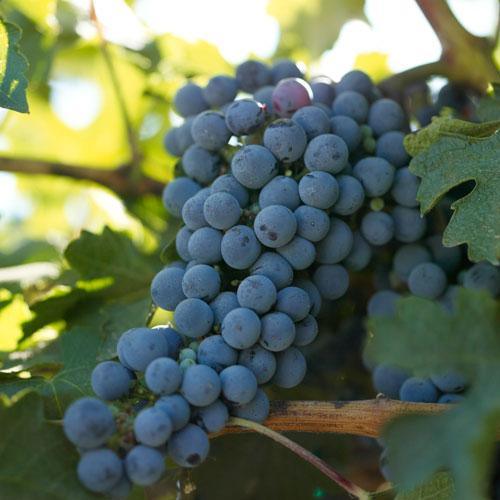
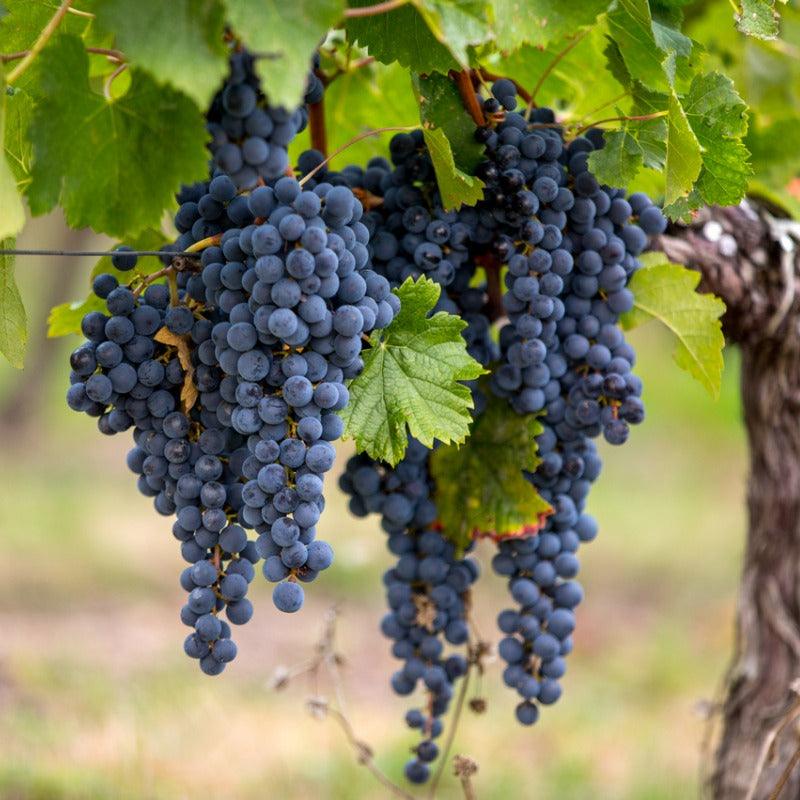
My Cab bare root vine has been producing leaves since the beginning of March. Too early to say much more.
The plants came just when I needed them and in perfect condition. I will use you again.
Plants died within the warranty period and they got the got the refund confused so I did not get the full amount of refund credit. Wasn't worth arguing with them about it but I won't be shopping with them again.
I ordered late spring. I dug the holes before ordering and the vines somehow got lost due to a shipping issue but eventually arrived alive. After planting in their 2x3 foot hole they started to break bud except for one. A few days later I received a second shipment by error and was told to keep them. I now have 5 good vines and one that did not break bud but is still green. Thanks for great service!
I purchased a large number of the Cabernet vines. Each had impressive root structure and came delicately packaged/sealed. Every single vine leafed out and looks incredibly healthy without a single sign of transplant shock. I would gladly purchase these again.
Videos
Articles
-
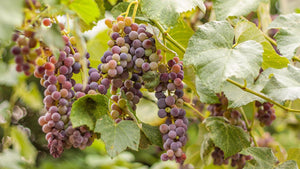 Sun, Jan 07, 2024
Sun, Jan 07, 2024Planting & Growing Grapes
-
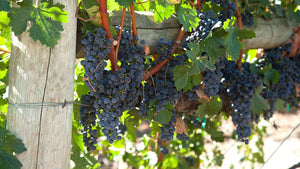 Wed, Mar 12, 2025
Wed, Mar 12, 2025When to Plant Grapes: A Complete Guide to Planting Grapes in Clay Soil and Beyond
-
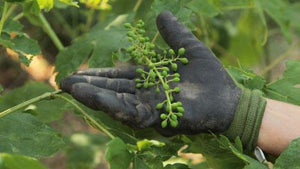 Thu, Jul 03, 2025
Thu, Jul 03, 2025Trim Grapes in Summer With Confidence: Learn How to Trim Grape Vines in Summer and the Secrets to Pruning Grape Vines During Growing Season
-
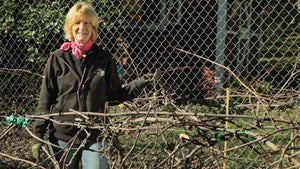 Thu, Feb 06, 2025
Thu, Feb 06, 2025Planting & Pruning Grape Vines




